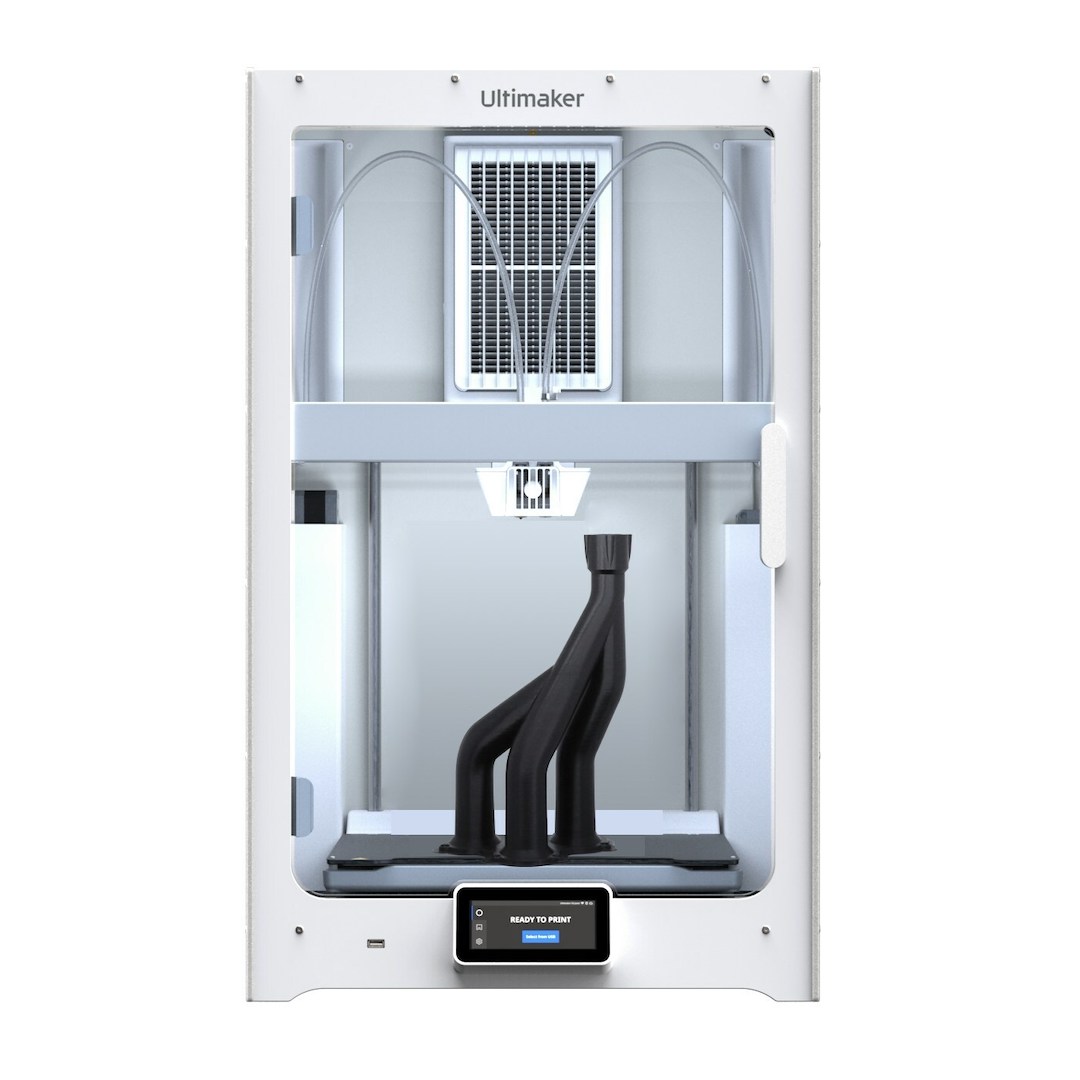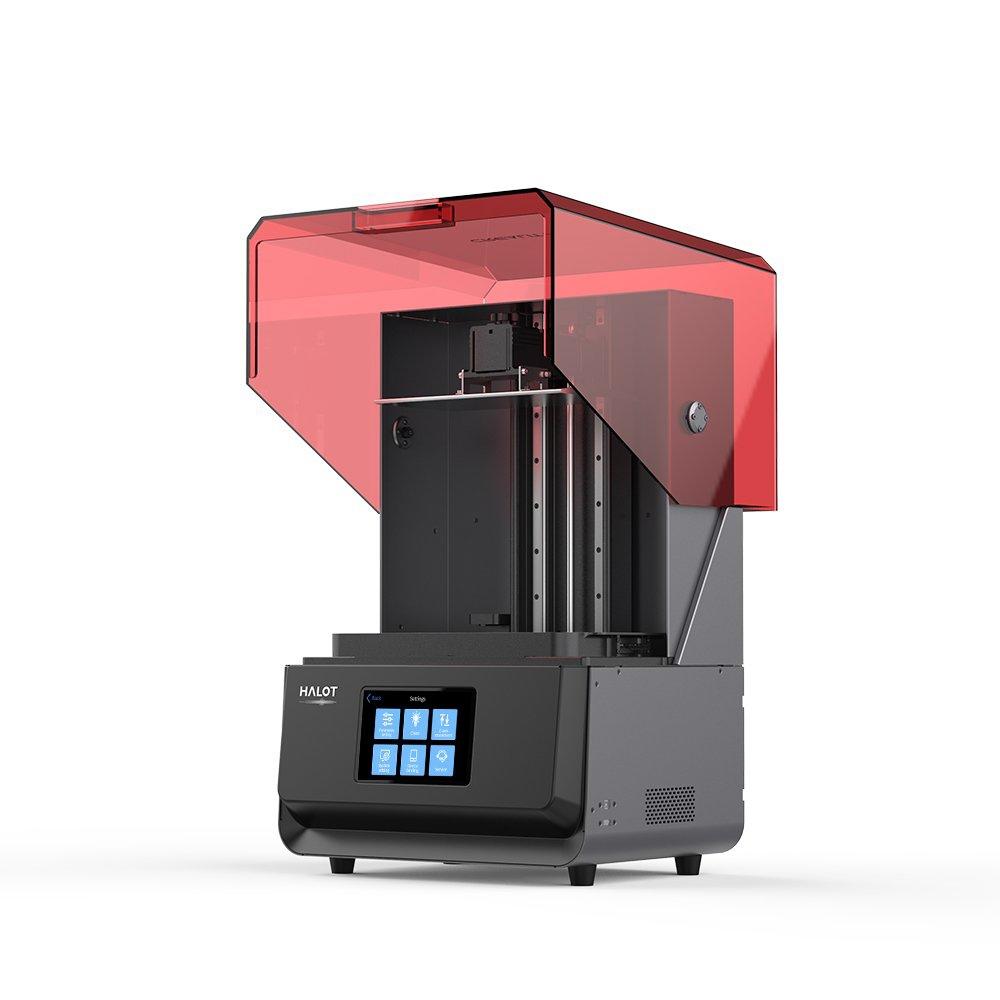Compare S7 vs Halot Max
Comparison between the best 3D printers
Choose the best 3D printer at the best price. The cheapest 3D printers are here.
Buy a 3D printer here with 3D Fila.
 |
 |
|
| Model | S7 |
Halot Max[BUY Halot Max] |
| Printing Material | Filament | Resin |
| Buy Filament for Ultimaker S7 | Buy Resin forCreality 3D Halot Max | |
| Estimated price | $8300,00 | $3000,00 |
| Manufacturer | Ultimaker | Creality 3D |
| Release Year | 2022 | 2021 |
| Print Volume [mm] | 240x330x300 | 293x165x300 |
| Printer Size [mm] | 585x495x800 | 480x387x770 |
| Weight [kg] | 29 | 32,5 |
| Power Loss Recovery | YES | NO |
| Maximum Resolution [mm] | 0,1 | 0,03 |
| Processor | ||
| Display | Display touchscreen 4,7'' | Display touchscreen 5'' |
| Power Supply | 500 W | |
| Connectivity | USB / Wi-Fi | SD / USB / Wi-Fi |
| Operating systems | Windows, Mac, Linux | Windows, Mac, Linux |
| Date of registration in the system | 2023-01-28 | 2022-11-04 |
| Release date | 2022 | 2021 |
| Extra features | The UltiMaker S7 printer features a series of technological innovations to enhance 3D printing. It incorporates a flexible, magnetic build plate with PEI coating, promoting better adhesion and easier part removal. Its new inductive sensor significantly improves bed leveling, ensuring perpendicular and accurate prints. In addition, the S7 has a higher quality camera for remote monitoring, an integrated air filter, and uses a unique glass door to maintain a constant temperature in the print chamber. The machine is also compatible with the expansion kit for metal printing. | The Halot Max printer stands out for its large print size (293 x 165 x 300 mm) and uses SLA technology. It has an integral light source for improved accuracy and a strong core with an advanced operating system. Its Z-axis module ensures high precision, supported by efficient slicing software. The machine offers online OTA updates and boasts an adjustable layer thickness between 10 and 200 microns. Its XY-axis resolution is 3840*2160, with 0.05 mm accuracy, and an integral 405nm light source. The printer includes a 5" touchscreen and multiple connectivity options, such as USB, Creality Cloud, and HALOT BOX WiFi. With cutting-edge technology, the Halot Max is ideal for printing small models with uniform precision, thanks to its self-developed lighting system and stable printing mechanism, which includes dual linear guides, ball screws, and an intelligent brake system. |
| Support for multiple colors and materials (AMS and CFS) | NO | NO |
Notes * |
||
| Cost-benefit | 1 / 10 | 5 / 10 |
| Hardware | 3.6 / 10 | 1 / 10 |
| Tela | . | . |
| Print volume | 4 / 10 | 3 / 10 |
| Performance | 1 / 10 | 9 / 10 |
| [BUY Halot Max] |
Conclusion |
| In comparing the Ultimaker S7 and the Creality 3D Halot Max, both printers present distinct advantages that cater to different user needs and budgets. The Ultimaker S7, while significantly higher in price, boasts advanced technological features that enhance usability and print quality. Its innovative build plate, superior bed leveling sensors, and integrated air filter contribute to an overall superior printing experience, particularly for users who prioritize ease of use and print reliability. Its robust design and added capabilities for metal printing make it a strong choice for professional environments or serious hobbyists willing to invest in a high-quality machine. Conversely, the Creality 3D Halot Max stands out for its affordability while still offering impressive specifications, including a larger print volume and high XY-axis resolution. Its SLA technology and features such as an adjustable layer thickness make it ideal for detailed prints and small models. However, it lacks some of the advanced functionalities, like power loss recovery and integrated temperature control, that the Ultimaker provides. Ultimately, the choice between the two boils down to budget and specific printing needs. The Ultimaker S7, with its exceptional performance and features, targets users looking for high-end quality and reliability. In contrast, the Halot Max serves those seeking a cost-effective solution with solid performance, particularly for precision printing tasks. Each printer has its strengths, making them suitable for different segments of the 3D printing market. |

